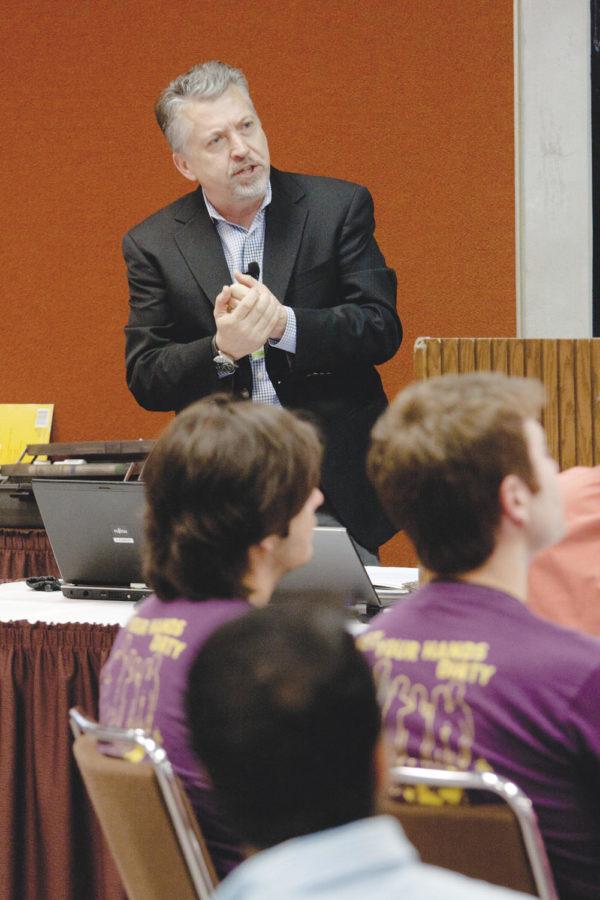Local Food Summit offers food for thought
Keynote speaker David Dahlquist addresses participants at the Iowa Local Food Summit at the Scheman Building on Tuesday, April 3.
April 3, 2012
Students, faculty and Ames community members gathered to talk about the Local Food and Farm Plan and to show the importance of locally grown foods in Iowa at the Local Food Summit.
The Summit was to get an update and see what is still needed with regards to the Iowa Local Food and Farm Plan, which was written up a year ago by the Leopold Center for Sustainable Agriculture in response to state legislation passed in 2011.
The legislation that was passed mandated that the Leopold Center develop a Local Food and Farm Plan for the state of Iowa.
“The goal is to increase local foods and eliminate gaps between farmers and producers,” said Angela Shaw, assistant professor of food science and human nutrition.
The Local Food and Farm Plan is separated into sections that are seen as gaps between farmers and producers. Each section has a leader and has tasks it is set to accomplish.
It has 34 unique recommendations that are grouped into three main sections: recommendations for state appropriations, recommendations to create a local Food and Farm Advisory Board and a Local Food and Farm Program Fund, and recommendations related to operation of the plan.
The summit started with a welcome and introduction of guests, including Iowa Secretary of Agriculture Bill Northey and ISU Extension Director John Lawrence.
It continued with the keynote speaker, David Dahlquist, who talked about “Wild Asparagus: The Art of Making Special Places.”
In the morning, there also was an overview of the Local Food and Farm Plan.
After lunch, there were smaller workshops that participants attended, each about the different recommendations related to operations of the plan.
These recommendation workshops were in business, assessment, food safety, processing, beginning and minority farmers and food incentives.
In each workshop, the leaders posed three questions to the participants: “What did you hear about opportunities of this workshop in local food, what are some challenges or problems mentioned in the plan and what are the next steps we can take?”
The items the groups listed as possible next steps were then voted on at the end of the allotted time. When the groups came together at the end, the steps that had the highest votes were presented to the entire group of attendees.
“The summit’s purpose is to get an update of where we are from the participants,” Shaw said.
Many different people participated as well, including organic farmers, food distributors, employees of supermarkets, people in charge of farmers markets, bankers and many others.
Shane Tiernan, who works with GNB Bank and the Northern Iowa Food and Farm Partnership, said the activity across the state with local foods was very interesting.
“We need to get our arms around this and make it economically sustainable, because right now it’s very fragmented. There are tremendous resources out there, but not a lot of people know about them,” he said.
“If Iowans ate the recommended amount of fruits and vegetables in a day, then that would bring in $302 million to the state of Iowa and create many jobs,” Shaw said.







